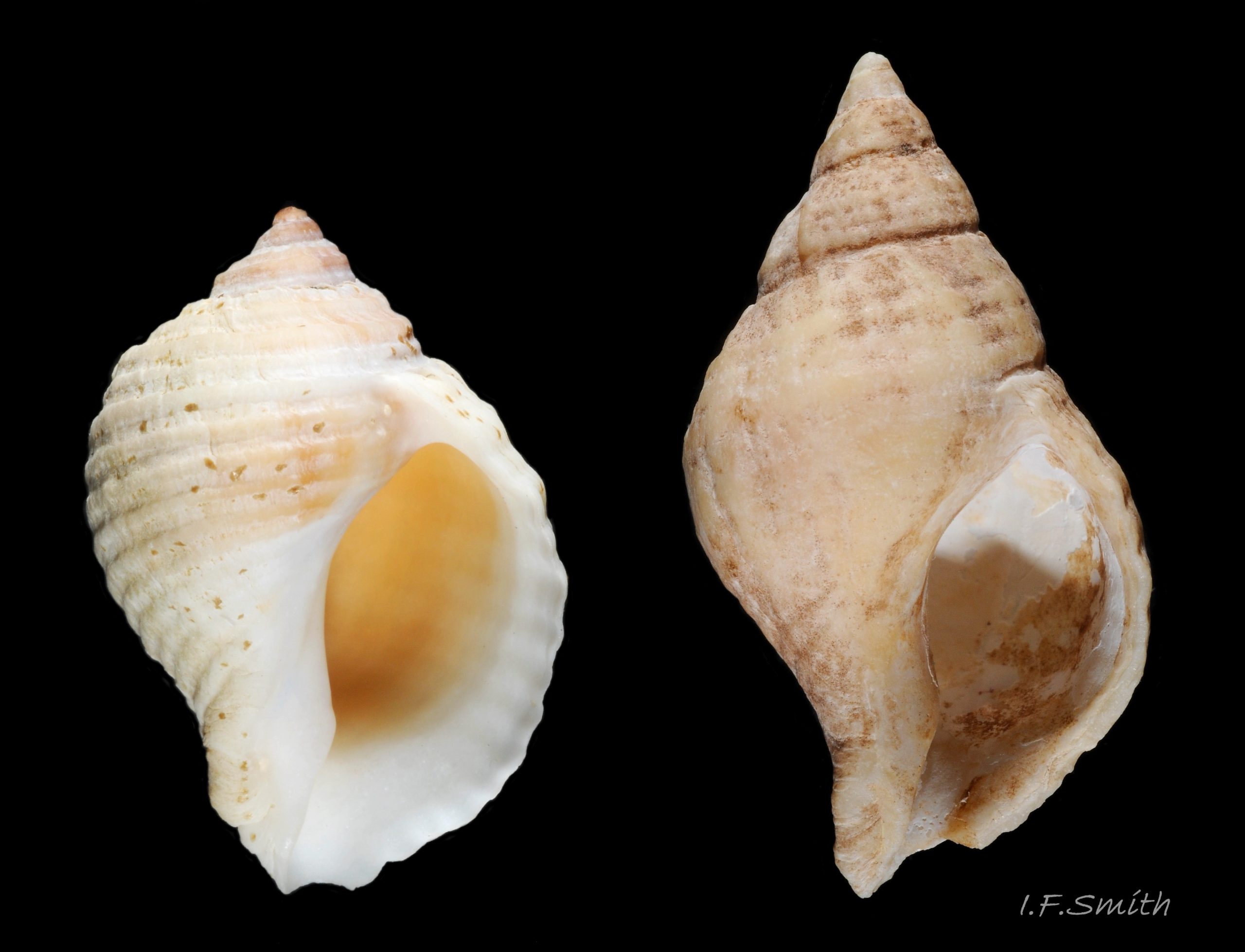Left shell from shore with over 3000km fetch to west; strong waves and few crabs. Frequent spray so large aperture with large foot for firm grip against wave impact more important than minimizing desiccation or reducing crab access with small aperture. Short-spired wave-resistant shape more important than shell strength and withdrawal space to counter crab attack.
Right shell from enclosed sea loch, maximum fetch 3km; minimal waves and abundant crabs. Tall spire gives withdrawal space, and stronger shell with small aperture resists frequent crab attack. Small aperture important to reduce desiccation as no spray, associated small foot with weaker grip unimportant as no wave impact.
Currey & Hughes (in Fretter & Graham, 1994) found that in N. Wales the average force to break adult shells (17-22mm high) was 240 Newtons on exposed shores, 400N on sheltered shores and 580N on very sheltered shores. As long as Nucella keeps a grip against waves so it is not smashed against rocks, waves pose no threat to the weaker shells, but crabs do.
42 Nucella lapillus. 25mm high & 30.7mm high. From extremely exposed shore and extremely sheltered shore (6km apart) Hoy, Orkney, Scotland. July 1973.

